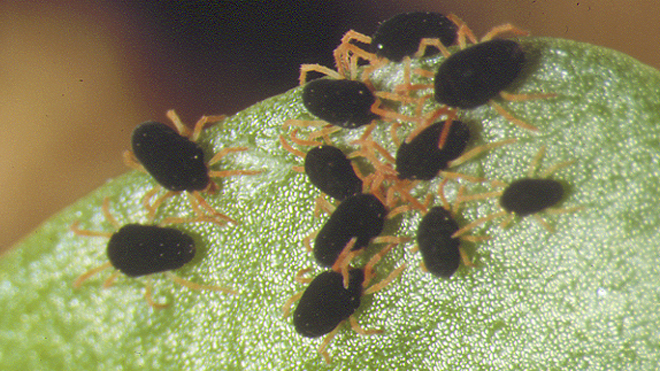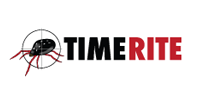Welcome to Australian Wool Innovation, a hub for the woolgrowers of Australia.
Not a woolgrower? Looking for information about wool products, wool care or wool processing?
The Woolmark Company is the global authority on wool. Visit Woolmark.com instead.
Check your TIMERITE® spray date

With spraying underway for the control of redlegged earth mites, it’s important for woolgrowers to check they have the best spray date for their farm. Their date can be obtained through the TIMERITE tool which has been updated to reflect new data and improved modelling.
Redlegged earth mites (RLEM) can be a major pasture pest for woolgrowers in the winter rainfall regions of southern Australia. RLEM are small (1 mm long) with black bodies and red legs, spending most of their time on the soil surface, moving onto plants to feed. The mites compete with sheep for pasture, which leads to production losses.
Strategic spraying of pastures in late winter–early spring can help minimise RLEM damage to pastures the following autumn. However, the best date to spray depends on where in Australia the farm is located.
The optimum date for your farm can be obtained through the TIMERITE tool at www.timerite.com.au.
“The TIMERITE tool was first launched more than 20 years ago but woolgrowers should check they have the ‘Best spray date’ for their farm, as these dates have shifted with new data and improved modelling,” said AWI National Extension Manager, Emily King.
“In addition to the Best spray date, the tool also now provides a date range – the Ideal spray window – for which control of RLEM is still very high. This provides growers with improved flexibility to plan a spray window, then spray when the weather is suitable.
“The new TIMERITE tool is also easier to use. Instead of the grower having to enter their farm’s coordinates, they now simply need to enter their postcode. Additionally, growers can visualise the impact on mite control if spraying outside the Ideal spray window.”
TIMERITE is effective against RLEM, but not against other pasture pests (including blue oat mite and others which look similar), so it’s important you know which pest you’re dealing with on your property. You should only spray when needed to help prevent pesticide resistance.
The first step in managing RLEM is to reduce risk within a paddock. Avoid sowing highly susceptible pasture species or crops into paddocks known to have high mite numbers; and incorporating a cereal crop into your rotation will reduce mite numbers. Control weeds, especially broadleaf weeds, within paddocks and along fence lines. Heavily grazing pastures in spring and burning stubbles will reduce mite numbers the following autumn.
TIMERITE was originally developed and funded by AWI and CSIRO. Updates and improvements were made by Cesar Australia in collaboration with CSIRO, AWI, GRDC and MLA.
More information: www.timerite.com.au

This article appeared in the Spring 2025 edition of AWI’s Beyond the Bale magazine that was published in September 2025. Reproduction of the article is encouraged.












